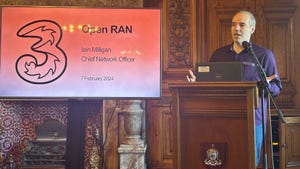Cox Starts All-Digital Rollout
Cox launches switch to all-digital service in its first market as it seeks to clear more bandwidth for faster broadband speeds, greater on-demand offerings and more video channels.

Following in the footsteps of other major US cable operators, Cox Communications has started converting its first market over to all-digital service as part of a company-wide effort to clear more bandwidth for much higher broadband speeds and more advanced video offerings.
Cox Communications Inc. , the third-largest US MSO with more than 5 million residential subscribers, confirmed local press reports earlier this week that it has begun the all-digital transmission conversion process in the Hartford, Conn. metro area. Plans call for switching that market totally over to all-digital service sometime next month.
A Cox spokesman said the privately owned MSO will then "move to some other markets in 2015." The company declined to disclose which of its markets would come next. But a good bet might be Phoenix, Las Vegas and Omaha, Neb., the three markets where Cox is initially rolling out gigabit broadband service to compete with similar gigabit rollouts by CenturyLink Inc. (NYSE: CTL).
Indeed, Cox's aggressive plans for introducing 1-Gig service are apparently driving much of its all-digital strategy. Ahead of every other major cable operator in the US, Cox intends to blanket all of its regions with gigabit service by the end of 2016, using the brand name of Gigablast. Among the nation's other top 10 MSOs, only seventh-ranked Suddenlink Communications has announced similar plans. (See Cox Goes Gaga Over Gigabit.)
In its markets, Cox now offers an average of about 60 analog video channels. Those channels eat up a disproportionate amount of bandwidth, consuming an estimated 40% of the MSO's downstream network capacity. With most of that bandwidth freed up by an upgrade to all-digital transmission, Cox would have much more room to deliver gigabit speeds over its hybrid fiber-coax (HFC) plant, especially with the upcoming introduction of the cable industry's next-gen DOCSIS 3.1 spec.
Get the latest updates on new video services and technologies by visiting Light Reading's video services content channel.
Unlike such other major MSOs as Comcast Corp. (Nasdaq: CMCSA, CMCSK), Time Warner Cable Inc. (NYSE: TWC), Charter Communications Inc. and Cablevision Systems Corp. (NYSE: CVC), Cox has not needed to go the all-digital route until now because its cable systems tend to have greater capacity than its peers' systems. While most other major cable systems have a capacity of 750MHz, Cox's systems typically have 860MHz or even 1GHz capacity, enabling it to offer more services without scrapping its analog channels. But the continuing rollout of gigabit service will swamp even Cox's greater system capacity, requiring it to reclaim the analog spectrum.
In Hartford, Cox intends to carry out the all-digital conversion by installing either full-scale digital set-tops or smaller, more limited digital terminal adapters (DTAs) in subscribers' homes. Existing basic cable subscribers can sign up for as many as two DTAs for no additional charge for up to two years.
— Alan Breznick, Cable/Video Practice Leader, Light Reading
About the Author(s)
You May Also Like












